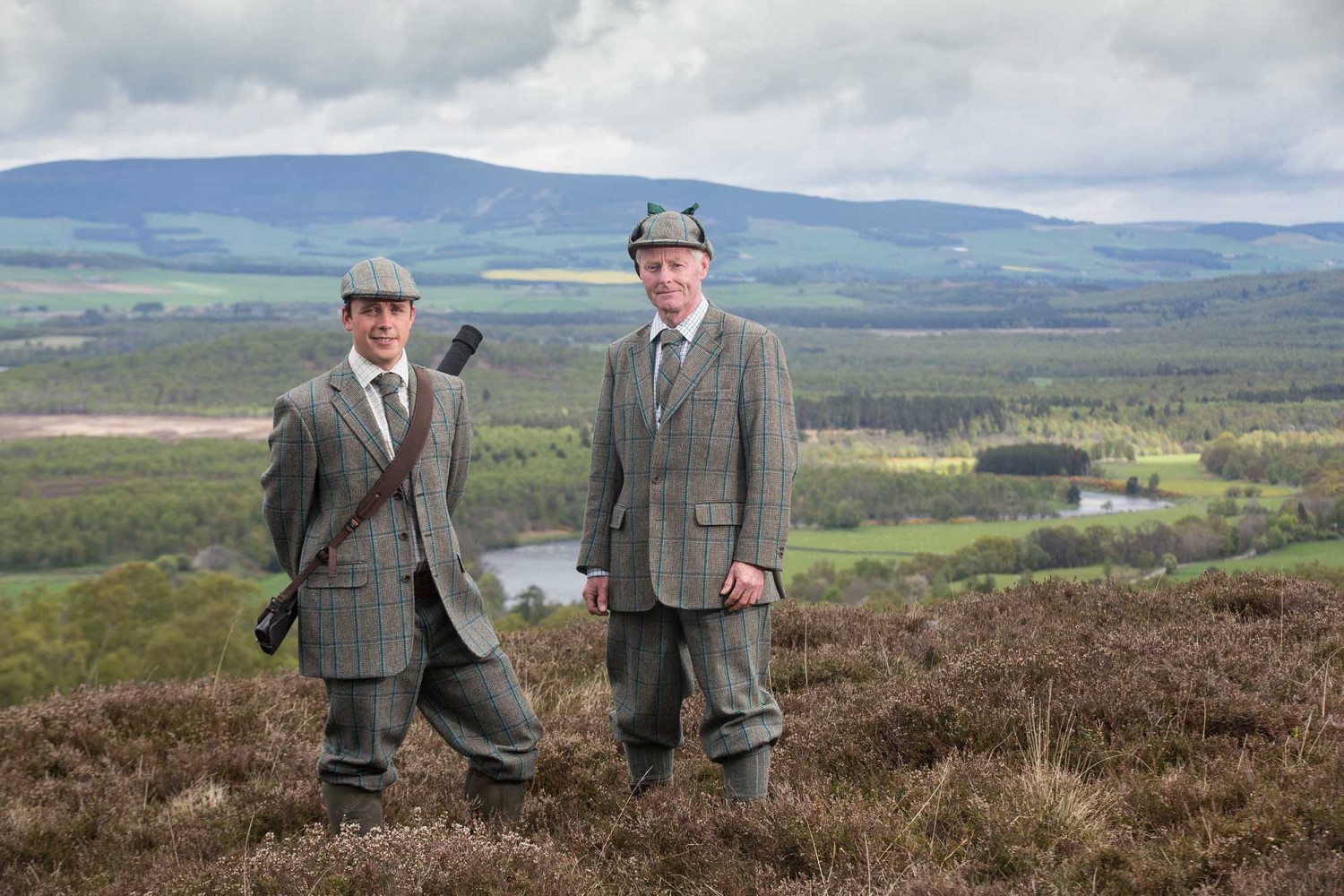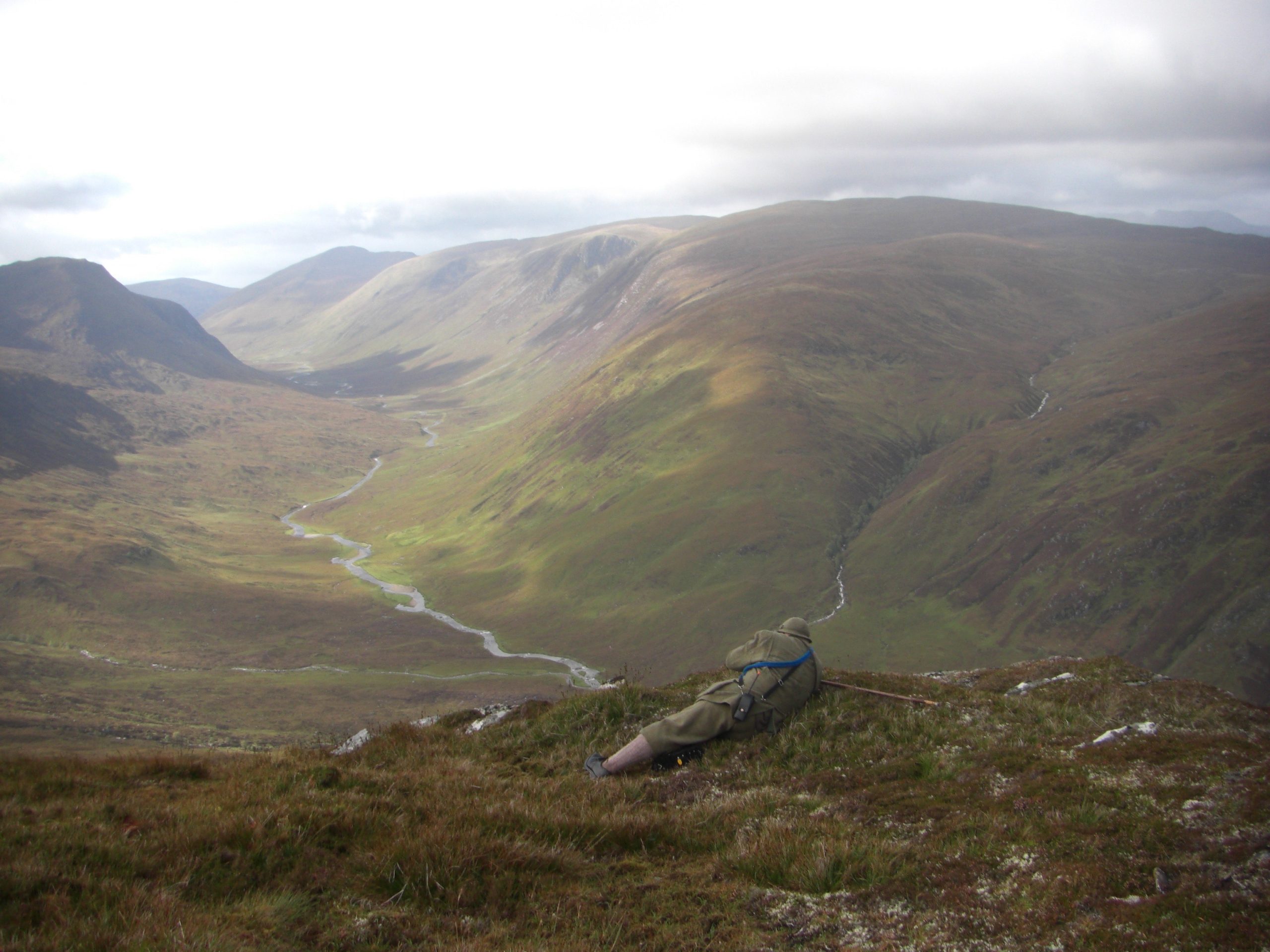10 Jun 2019
Estate tweeds are a cherished part of Scotland’s rural history, and are still worn to this day by families, ghillies, gamekeepers and residents on estates across Scotland and England. They serve both a practical and cultural purpose, unifying an estate and giving it a collective identity as well as providing a high performance cloth for outdoor pursuits.

The use of estate tweeds are still very much in use on estates like Glen Tanar
The birth of estate tweeds can be officially traced back to the 19th Century, however its roots go back much further and touch on pivotal moments in Scotland’s history.
Tweed has long been used for practical clothing in Scotland, originating in the handwoven wool cloth of working people and gaining it’s name (debatable as to whether by accident or on purpose) from the River Tweed in the Scottish Borders. Small scale weaving in people’s homes provided plenty of variation, with colours hand dyed using natural dye recipes and often different tweed designs produced by each weaver.

Example of a handwoven tweed using wool dyed with traditional plant dyes by Araminta Campbell.
However these humble beginnings took on a new significance after the Battle of Culloden in 1746.
This uprising involved thousands of Scotland’s fiercely proud Highlanders dressed in their clan tartans. The battle ended in a crushing defeat for the Jacobites and their many Highland warriors, and the Crown took measures to ensure such a rebellion would not happen again. One of these measures was the 1746 Act of Prohibition which banned Scottish men from wearing tartan and other elements of Highland dress.

The Battle of Culloden, oil on canvas, David Morier, 1746. Displayed in The British Museum.
Life in the Scottish Highlands changed drastically over the next 100 years, with the dissolution of the clan system and then the Highland clearances that dispersed thousands of Scots across the globe.
By the 1840s many of the Clan Chiefs no longer presided over their ancestral lands and they were rented or sold to a rising number of sporting enthusiasts who had discovered the incredible stalking, fishing and shooting opportunities the Highlands had to offer.

Deer Stalking in Scotland: Getting Ready. By Arthur Fitzwilliam Tait 1851. Displayed in the Museum of Fine Arts, Houston.
These new estate owners wished to produce an alternative form of Highland clothing for them and their workers and so began developing the very first estate tweeds. Different to tartans which signified the members of a family, estate tweeds were rooted in a place, bringing together people who lived and worked alongside one another regardless of their descent.
From the 1840s onwards, estates began to develop their own distinctive tweed patterns, often incorporating the colours and textures of their surrounding landscape. Woven in sturdy, semi waterproof wool, this cloth was the perfect material for both protecting against the elements and acting as camouflage while hunting.
 Estate Tweeds often provide camouflage while deer stalking in the Highlands.
Estate Tweeds often provide camouflage while deer stalking in the Highlands.
The use of estate tweeds has continued in modern times, with new patterns developed as estates are split or sold, and historical designs continued down generations.
Here at Araminta Campbell we are proud to continue the legacy of Estate tweeds, with the custom design of brand new patterns as well as reproducing old estate tweeds with our custom made service.
If you wish to read more we recommend Johnstons of Elgin’s recently printed edition of ‘Scottish Estate Tweeds’. In it you will also find examples of historic Estate tweeds as well as some that Araminta has designed or produced for Scottish Estates.
"*" indicates required fields